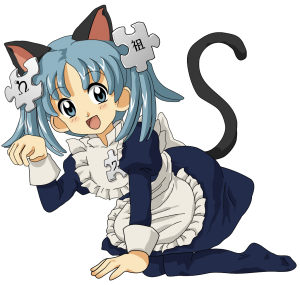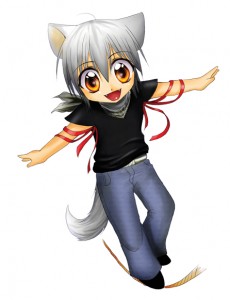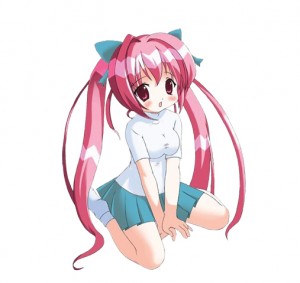What’s a Naruto? Or an Otaku? You hear these words from those weir Japanese animations that everyone is into. Anime superfan Riyaz Khan gives you a guided tour of his object of adoration
My sister faces a difficult decision, one that her six years of experience have not prepared her for. She turns to me with pleading eyes. “Shin-chan or Doraemon? What should I watch?” I decide that this is a wonderful opportunity to educate her a bit. “Did you know that the ‘chan’ added to Shin-chan’s is actually just a suffix used in Japanese?” She looks right through me and changes the channel. “Hattori!” she exclaims as the TV provides her with a third option. “Do you know what’s similar between all three?” I ask. “That they are all cartoons?” she says, taking the bait. “That’s where you’re wrong. All three of them are actually anime!” “How do you tell the difference?” she asks with a puzzled expression. “Well, anime is what Japanese animation is called,” I say. “But how do you tell whether the animation is Japanese or not?” she rebuts. “That is a very good question. You see…well… You just can!” She smirks as she realises that I have failed to accomplish my goal of teaching her something new. Her question was one I wondered about for many days. One day I decided to find the answer myself. I decided to learn the difference between cartoons and anime so that I would never again be at a loss of words.
 What is anime?
What is anime?
In Japan, all animation is known as anime. However, in other countries anime is generally used to denote only Japanese animation. One of the first and the biggest differences between anime and cartoons is their respective audiences. “People end up watching anime without even realising that what they are watching is anime and it is somehow different from other cartoons,” says Zain Ebrahim, an avid anime fan and media student. “Cartoons are generally made to appeal to little kids. Anime, however, is not.” While there is anime that appeals to children, that is not it’s only audience. The wide variety of genres that anime covers make it a medium that is appealing to people of all ages, sexes and races. You just have to find the right anime for you, which isn’t very difficult considering the large body of work that already exists.
Anime vs Manga
The terms anime and manga are used interchangeably quite often, but one is not always the synonym of the other. While in Japan manga refers to all cartooning (in comics and anime) outside Japan manga strictly means only comics from Japan. While anime and manga art work are identical most times, there are manga with different styles. Most anime available today is based on a popular manga series. Manga is available in weekly or monthly magazines such as Weekly Shounen Jump, Shoujo Friend and Shounen Ace.
Anime genres
ADVENTURE: Characters in adventure anime travel several lands. Fans of this genre prefer storylines which have the hero travelling from place to place either completing their goals or searching for them.
Examples: Fullmetal Alchemist, Pokemon
FANTASY: Set in magical worlds populated with beings with supernatural powers, the fantasy genre is a genre for anime geeks everywhere.
Examples: Fairy Tail, Attack on Titan, Berserk
ECCHI: This genre includes elements of sexual innuendo and nudity while still remaining lighthearted and PG-rated fun. It is generally used as fan service in harem anime (the protagonist is surrounded by many love interestes, much like in a harem).
Examples: To Love-ru, Hayate the Combat Butler, Air Gear
SHOUNEN: Meaning young boy in Japanese, Shounen anime is aimed at boys aged from 7 to 18. The stories are generally about fighting and the importance of friendship. It is the most popular anime genre outside Japan.
Examples: Naruto, Bleach, Dragon Ball Z
SHOUJO: Shoujo means young girl in Japanese and is aimed at girls aged between 7 and 18. It usually has a strong focus on romance.
Examples: Cardcaptor Sakura, Kaichou wa Maid-sama, Ginban Kaleidoscope
SEININ: Seinin anime is generally aimed at adult males between the ages of 18 and 40. It deals with more mature topics, including but not restricted to sex, violence, gore and satire. There is more emphasis on plot and less on action.
Examples: Akumetsu, Hellsing, Monster
JOSEI: Josei is aimed at adult women aged 18 to 40. Issues like infidelity and rape are not uncommon here. The genre also deals with problems that women face on a daily basis.
Examples: Nana, Paradise Kiss, Nodame Cantabile
SLICE OF LIFE: Normal, everyday life problems. It usually has a moral at the end.
Examples: K-On!, School Days, Bakuman
MECHA: Also known as robot anime, these feature robots in fights. The giant robots contain cockpits and are piloted by humans. Mecha anime is generally set against war.
Examples: Code Geass, Neon Genesis Evangelion, Mobile Suit Gundam
YAOI: A genre of anime that deals with homosexual love. It is targeted at the female audience as fan service. Examples: 07-Ghost, Angel Sanctuary
YURI: Deals with lesbian love. Yaoi and Yuri anime do not shy away from graphic scenes and are frequent in Hentai.
Examples: Aoi Hana, Strawberry Panic
HENTAI: Contrary to popular belief, Hentai does not represent any single genre of animation. It is internationally used as a defining term for all Japanese art porn – not just anime but pictures and comics of Japanese origin as well. Hentai has genres of its own, like Netorare, Ahegao and Chikan.
 Display of Japanese cultures and traditions
Display of Japanese cultures and traditions
While watching anime one of the first things that you would notice is that its characters behave differently, and things in general – such as buses, trains, buildings, food, etc – are all different from what we are used to. Anime is an art form. Just as any art form should do, it tells you about itself. It tells you about its country of origin, the people who live there and their religious and cultural beliefs. Anime is a brilliant guide to Japanese culture and also helps us understand it from the perspective of a Japanese person.
Where should I start?
There are a few things you can do to get your own journey to the Otakudom (see our glossary) rolling.
* MyAnimeList.net and Animenewsnetwork.com are two websites that will provide you with any and all information regarding anime. Use them to search for the genre you want to watch. Watch anime with high user ratings. They have good ratings for a reason.
* Crunchyroll.com and AnimeGet. com allow you to stream anime and watch online.
* Mangafox.me and Mangareader. net are good websites to start reading Manga. Mangafox has an advanced search option that can be very useful to new readers.
* ZincView.com and 4chan.com are good forums to discuss the latest anime and manga trends with other fans.
* Watching anime music videos (amvs) on YouTube is something every anime fan goes through. These short clips can either pump you up or reduce you to tears.
* Some anime take a little time to pick up, so give it a chance before dropping it. However, if you dislike the first three episodes you will likely dislike the rest of the series.
Continuing the obsession
One of the biggest advantages of watching any television series is being able to call up your friends afterwards and discuss the latest plot twist and criticise the writer’s stupidity at not giving favourite characters enough screen time. Anime has a small yet devoted fan base, and like other fandoms the anime fandom takes its title very seriously. Fans indulge in many activities to bring their obsession to the real world.
Cosplay: Short for costume play, cosplay is about dressing up like your favourite anime character. Such clothes are not readily available in the market, so cosplayers design and create their costumes. There are cosplay conventions all over the world with prizes for the best dressed.
Anime Con: Anime conventions are the Mecca of anime lovers everywhere. Cosplayers and Otakus come in droves to watch and experience the attractions. There is an Anime Con held in New Delhi every year.
Anime Clubs: The Mumbai Anime Club (MAC) brings fans together to talk about all things anime. It has recently started a magazine called
Over 9000. Look up anime clubs in your city. You are sure to find one.
For anime lovers in India, their affair has only just begun. “The anime movement in India is only going to grow in the near future,” says Niharika Patil, one of the first cosplayers in India and a founding member of the MAC. Brinda Nair, an MAC member, says, “The Indian Otaku scene is definitely emerging and is getting stronger. There are anime and manga clubs in major cities in India and I hope more clubs will emerge in other parts of India. We still have a long way to go but we’re getting there!”
Watch list for the beginner
Code Geass
● Bleach
● Death Note
● Tengen Toppa Gurren Laggan
● Air Gear
● Steins;Gate
● Cowboy Bebop
● Fullmetal Alchemist & Fullmetal Alchemist Brotherhood
● Inu Yasha
● Akira (film)
● Summer Wars (film)
 A STARTER GUIDE TO ANIME SPEAK
A STARTER GUIDE TO ANIME SPEAK
Otaku: Anime fans outside of Japan label themselves Otakus. An Otaku is a person who is a fan of Japanese things like anime, manga, video games, etc.
Hayao Miyazaki:
Filmmaker whose movies have brought Japanese animation recognition all over the world. His 2001 film ‘Spirited Away’ was the first anime to win an Academy Award.
Akihabara: Shopping district in Japan considered Otaku central owing to the numerous anime, manga and video game goods available there. Akihabara tries to create an atmosphere resembling the game and anime worlds the customers are used to. The streets of Akihabara are covered with anime and manga icons. The maid cafes in the district are a major attraction.
* There are of course exceptions to the rule but those are few and far in between.
Volume 4 Issue 2




























